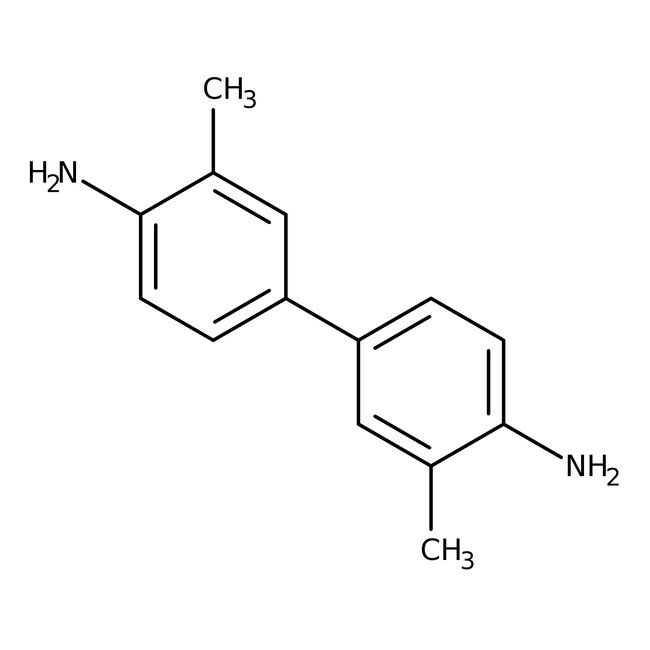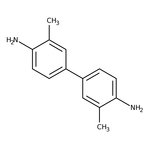Search Thermo Fisher Scientific
Thermo Scientific Chemicals
o-Tolidine, 98%
CAS: 119-93-7 | C14H16N2 | 212.296 g/mol
Catalog number ALFA17837.22
View Price:Sign InSign in to see your account pricing. Need an account? Register with us today.
Quantity:
100 g
Specifications
Chemical Name or Materialo-Tolidine
CAS119-93-7
Health Hazard 1H302-H350
Health Hazard 2GHS H Statement
H350-H302
May cause cancer.
Harmful if swallowed.
H350-H302
May cause cancer.
Harmful if swallowed.
Health Hazard 3P201-P202-P264b-P270-P281-P301+P312-P308+P313-P330-P501c
View more
O-Tolidine is widely used in dye production. It is particularly used in textile, leather and paper industries. It can be used as an indicator in analytical, clinical and forensic chemistry. It is utilized for the determination of gold and chlorine level in swimming pool water.
This Thermo Scientific Chemicals brand product was originally part of the Alfa Aesar product portfolio. Some documentation and label information may refer to the legacy brand. The original Alfa Aesar product / item code or SKU reference has not changed as a part of the brand transition to Thermo Scientific Chemicals.
Applications
O-Tolidine is widely used in dye production. It is particularly used in textile, leather and paper industries. It can be used as an indicator in analytical, clinical and forensic chemistry. It is utilized for the determination of gold and chlorine level in swimming pool water.
Solubility
Slightly soluble in water.
Notes
Light and air sensitive. Incompatible with strong oxidizing agents.
O-Tolidine is widely used in dye production. It is particularly used in textile, leather and paper industries. It can be used as an indicator in analytical, clinical and forensic chemistry. It is utilized for the determination of gold and chlorine level in swimming pool water.
Solubility
Slightly soluble in water.
Notes
Light and air sensitive. Incompatible with strong oxidizing agents.
RUO – Research Use Only
General References:
- Kumar, A.; Sharma, K. K.; Kumar, P.; Ramchiary, N. Laccase isozymes from Ganoderma lucidum MDU-7: Isolation, characterization, catalytic properties and differential role during oxidative stress. J. Mol. Catal. B: Enzym. 2015, 113, 68-75.
- Kagalkar, A. N.; Khandare, R. V.; Govindwar, S. P. Textile dye degradation potential of plant laccase significantly enhances upon augmentation with redox mediators. RSC Adv. 2015, 5 (98), 80505-80517.



